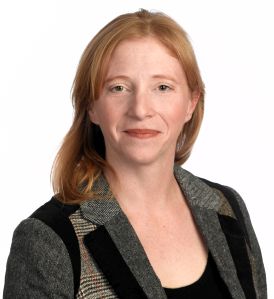Water quality trading has been touted for decades as a voluntary solution to the vexing problem of nutrient runoff and pollution.
“Water quality trading (WQT) is an approach that offers greater efficiency in achieving water quality goals on a watershed basis,” the Environmental Protection Agency said in a 2003 policy. Five years later, EPA said WQT “offers a promising approach to controlling pollutants from multiple sources that collectively impact water quality conditions.”
But WQT never really took off as the agency shifted its emphasis more toward the development of numeric criteria to measure stream health. Nitrogen and phosphorus runoff into waterways is recognized as a problem in many areas of the country, notably in the Mississippi River Basin, where nutrients have helped create the “Dead Zone” in the Gulf of Mexico, a massive area of low to no oxygen.
Now, EPA is trying to give WQT a jump-start: Last week, the agency’s top water official, David Ross, told EPA regional administrators in a publicly released memo that EPA wants to move toward more market-based solutions to nutrient pollution — water quality trading in particular.
Reaction from trading proponents has been positive. “I’m very excited,” said Debbie Reed, executive director of the Coalition on Agricultural Greenhouse Gases (C-AGG), which is working on various market-based environmental improvement programs.
Reed said there has been very little progress in the WQT space in recent years, mostly because of the vagueness of the 2003 policy. Now, with EPA signaling it plans to encourage the development of WQT and other non-regulatory approaches, potential players can feel more assured about getting into trading.

Debbie Reed, C-AGG
Carbon trading markets “have made considerable progress in the areas of development of rules, metrics, tools and protocols,” Reed explained in an email, adding that the lack of clear guidance from EPA has hindered development of WQT program. “The new guidance is certainly helpful in many ways that will help with certainty.”
“We’re happy to see that EPA is throwing support behind water quality trading,” said Kristiana Teige Witherill, Clean Water Project Manager at the Willamette Partnership in Oregon and the lead on strategy development and facilitation for the National Network on Water Quality Trading.
The idea is fairly simple: Farmers adopt best management practices to reduce runoff and dischargers — say, electric utilities or wastewater treatment plants — purchase credits generated by the farmers.
“A lot of times it may be cheaper (for dischargers) to work with farmers and landowners in the watershed to do a conservation practice” than pay for improvements to their own treatment facilities, said Larry Antosch, Ohio Farm Bureau’s senior director for policy development and environmental policy.
But while the concept is a basic one, putting together a trading program can be daunting, as it requires answering questions about current and desired water quality, the effectiveness of certain conservation practices, and where the trading can take place — only within one watershed or in a broader area? Then there’s the small matter of getting people involved and establishing a functioning market.
Want more energy news? Visit our Energy page here. For unlimited access, try a free one-month subscription!
Despite the EPA memo, “I don’t know that we’re going to see a huge spike in programs,” said Witherill, stressing she was not authorized to speak for the NNWQT, but was offering her own opinion. However, she called the memo "a great first step in increasing demand for water quality trading."
Jessica Fox runs a program involving Kentucky, Ohio and Indiana in the Ohio River Basin that she said is the largest in the country. But she cautions that it's not easy to set one up.
Fox, a program manager at the nonprofit Electric Power Research Institute, said the program has about 50 contracts with farmers who employ a variety of conservation practices, including cover crops and cattle exclusion fences.

Jessica Fox, EPRI
But EPRI pays them to adopt the practices so they are, as she put it, “disaggregated from any risk.” The program uses state agency personnel to ensure that the practices have, in fact, been put in place, she said.
The program mostly uses models to measure reductions in nitrogen and phosphorus, but also has a couple of in stream monitors, Fox said, emphasizing the "rigor" of the program.
“It’s costly to do this,” she said. “That rigor is not free.”
“I do sort of worry — if you’re a small organization and you’re trying to get started, how do you do it?” she asks. “Can it be economically sustainable without philanthropic funds” such as those from EPRI?
In the Ohio River program, companies that have purchased credits — including Duke Energy, American Electric Power and Hoosier Energy — have used them to meet corporate sustainability goals, not permit requirements, Fox said.
Water quality trading definitely has critics, however. Food & Water Watch, an environmental group based in Washington, D.C., has not found any evidence that such programs work.
“We call it water pollution trading,” said Scott Edwards, co-director of the group’s Food & Water Justice project. “We’ve seen no objective evidence that it’s resulted in any watershed improvements at all.”
“I don’t think the credits they’re generating are properly verified,” Edwards said, adding that the Clean Water Act does not allow for trading.
Environmental groups raise other issues, such as the use of modeling to measure water quality improvements.
Witherill, however, counters that “rigorous environmental accounting” has always been part of the national network’s recommendations. Monitoring should be conducted “where practical,” but modeling “can come in handy,” she said.
“There are a lot of sophisticated models out there that can (estimate) edge of farm, edge of field” conditions, she said. Ross said the same in his memo, pointing to improved nonpoint pollution reduction technologies and practices.
Questions also have been raised about the size of the watershed being targeted, given that the memo said WQT should be considered on a watershed scale. “Working within a larger geographic area may facilitate greater market opportunities and participation resulting in larger scale resource improvements over time,” it said. The Mississippi River watershed, however, takes in all or parts of 32 states.
Ross’s memo gives a boost not just to water quality trading, but to other market-based programs in their early stages or yet to be developed at all.
Reed, for example, says C-AGG has been working for nearly two years to develop an Ecosystem Services Market Program. “We have finalized a protocol to quantify the impacts of agricultural practices on increased soil organic carbon, changes in (greenhouse gases), and enhancements to water quality and water use (conservation). That protocol is being piloted beginning this month through the end of 2019 on 50,000 acres of rangeland, pastureland and cropland” in Texas and Oklahoma.”
For more news, go to www.Agri-Pulse.com


